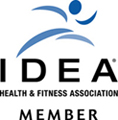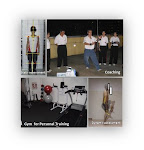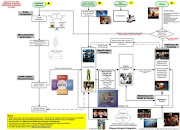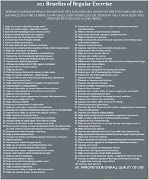The President’s Council on the Physical Fitness & Sports (as cited in Cox, 2007, p. 393) “ If exercise could be packed into a pill, it would be the single most widely prescribed and beneficial medicine in the nation”.
In the Singapore Sports Council’s National Sports Participation Survey (Market Probe-Precision Research Pte. Ltd., 2005) released on March 2005, it shows 48 percent of 8,007 respondents exercise at least once a week as compared to 38 percent on 2001. Of these 40 percent said that they had no time for sports due to work commitments. It was significant that 24 percent of the non-exercisers blamed lack of time due to work (for making them too exhausted), lack of interest and family commitment that gobble up their time. Almost 90 percent listed watching TV or DVD movies at home as their choice of leisure activity on weekdays. Sports (36%) was ranked behind reading (48), listening to music (38) and listening to radio (37) with 2,784,900 subjects surveyed. On weekend, sports (37%) was ranked even lower at seventh, falling behind activities like shopping and dinning out.
Said Nanyang Technological University undergraduate Melody Tan: “ I know I should exercise but somehow when I comes to doing it, I just feel lazy and cannot find energy or the motivation”(Yi Shen, 2006). Singapore Sport Council high participation division director Michael Chan has set the target to at least 50 percent of Singaporean active by 2011, with more of them exercising three or more times per week; this is challenging goal. At present Scandinavian countries such as Finland, which have a big sporting culture, which have only 50 percent of the population participates in sport. In addition, there is a concern to corporations, government and individual to control the health care costs. The preventive approach to cut costs is to prevent health problems before there arise thus avoiding the treatment costs in the first place (Gettman, 2000).
Exercise in many cases is as effective as psychological effect as psychotherapy and antidepressant drugs in treating emotional disorders (Lawlor & Hopker, 2001). Epidemiological studies have shown an inverse related to depressive symptoms and that individuals who increased their activity over time were at no greater risk for depression than individuals who had been physically active all along (Babyak et al., 2000). Millions of people worldwide are affected by mental health and are associated to increased morbidity and healthcare costs (Fontaine, 2000).
This paper shall cover the topics on 1) the psychological benefits of exercise and 2) teachers, coaches and exercise leader/trainer to enhance the benefits.
Psychological Benefits
Many literatures support the position of regular exercise leads to improve in psychological affect. Improved affect manifested in the form of reduction in negative affect like anxiety and depression and increase the positive affect like self-efficacy, vigor and well-being.
We cannot say that “exercise improve health and physical well-being” without qualifying. In practical term, it would be wise to say fit by doing aerobics, walking, swimming, and jumping rope; and if we play football, rugby, hockey, or other competitive contact sports, we need to have good health insurances due to injuries (Coakley, 2007, p. 105).
It is generally believed that best psychological benefits are derived using a moderate intensity of exercise as opposed to a very low or a very high intensity, the evidence through well controlled investigation is researched by Cox R.H., Thomas T.R, Hinston P.S. and Donahue in 2004 (Cox, 2007, p. 393) that a bout of relatively intense exercise is superior to a moderate bout of aerobic exercise in terms of reducing state anxiety. This concludes Cox’s research, exercise of moderate and slight intense exercises are effective in reducing state anxiety. With sixty minutes of cross-training, or training that includes both acute (refers to exercise that is short duration, e.g. 30 minutes) aerobic exercise and resistance training (involves the use of weights or weight training for muscle strength training) has shown to be effective in reduce the anxiety (Hale, Koch, & Raglin, 2002).
Reductions in state anxiety are not necessarily observed immediately following exercise. Delay anxiolytic effect is the result in an anxiety decrease following a delay of 30 to 90 minutes after acute bout of aerobic or resistance training. This effect can be due to either the intensity of the exercise or the arousal component of the anxiety (Cox, Thomas, & Davis, 2000). Brain derived neurtorophic factor (BDNF) is the brain produced molecules that nourish neurons and ensure the overall brain health. This protein seems to act as a ringleader, both prompting brain benefits on its own and triggering a cascade of other neural health–promoting chemicals to spring into action. Cotman and Engesser done the research in 2002 (as cited in Cox, 2007, p. 394) shows that exercises increase the BDNF presence in the brain.
Craft & Landers done their research in 1998 (as cited in Daley, 2002): The effect of exercise on clinical depression and depression resulting from mental illnesses: Journal of Sports & Exercise Psychology, the benefits of regular physical activity are greater for individual suffering from psychological disorders than normal individuals. The research had shown increased in positive mood and self-efficacy for clinically depressed individuals participating in martial arts. The benefits include a) effective clinical depression reduction during aerobic and non-aerobic exercise, b) more depressed individual benefit from exercise, c) exercise was beneficial as psychotherapy and drug therapy for reduce depression and d) chronic exercise programs were more effective than acute exercise.
When elderly participate in aerobic exercise, the selective cognitive function is preserved and the rate of the decline is retarded which normally declines with age. In research on older adult of age between 60 to 70 participating in a six month program experimenting reduction in confusion, tension and anger (Cox, 2007, p. 396). Elderly must continue to exercise to enjoy the psychological benefits at an intensity that leads to perspiring and heavy breathing.
Social– cognitive theory is used to explain the effect of physical activity on well-being (Netz, Wu, Becker, & Tenenbaum, 2005). On the basis of a conceptual framework proposed for evaluating well-being in older age, four general components were considered: (a) emotional well-being (i.e., state and trait anxiety, stress, tension, state and trait depression, anger, confusion, energy, vigor, fatigue, positive affect, negative affect, and optimism), (b) self-perceptions (i.e., self-efficacy, self-worth, self-esteem, self- concept, body image, perceived physical fitness, sense of mastery, and locus of control), (c) bodily well-being (i.e., pain and perception of physical symptoms), and (d) global perceptions such as life-satisfaction and overall well-being. Aerobic training was most beneficial and moderate intensity activity was the most beneficial activity level. Longer exercise duration was less beneficial for several types of well-being, though findings are inconclusive. Physical activity had the strongest effects on self-efficacy, and improvements in cardiovascular status, strength, and functional capacity were linked to well-being improvement overall. With cardiovascular fitness, exercise stimulates the production of neurotransmitters, which has positive effect upon psychological mood states. Studies have shown that depressed individual often has reduction in the secretion of various amine such as norepinephrine, serotonin, and dopamine (Cox, 2007, p. 398).
Report of the Surgeon General: Physical Activity and Health Adolescents and Young Adults recommends that exercise serves and to have beneficial effect on psychological mood and physiological as for the children and adult. Without successful treatment on the negative mood states, depressed adolescents are at an elevated risk for academic failure, social isolation, promiscuity, drug and alcohol abuse, and suicide (Motl, Birnbaum, Kubik, & Dishman, 2004).
Exercise in social interaction such as with friends and colleagues is pleasure and has positive effect in improving the mental health; exercise along and at home results in greater reductions in negative mood than at other places (Landers, 1997). Exercise helps individual to distract from worry and frustration. Chronic exercise is more powerful and effective in reducing negative mood state than relaxation exercise.
Endorphin is the brain production of chemicals that have “morphine-like” effect on exerciser and sometimes call ”runner’s high” in sports science. The general euphoria produced by the endorphins serve to reduce the negative mood states (Cox, 2007, p. 400).
Exercises have significant effects on cellular expression of adhesion molecules on circulating leukocytes. Given the crucial role that adhesion molecules on circulating cells play in inflammation and disease, these findings may have clinical relevance in sympathetic nervous system–induced immune activation (Goebel & Mills, 2000) (Nieman, 2001) – this improves the immune system.
Teachers, coaches and exercise leader/trainer enhance benefits to participants
Children behaviour are greatly influenced by their parents’ attitude and behaviour regarding exercise (Sarah, Nancy, Mary, & Marsha, 2004, p. 131). Coaches and teachers are often like parents ensuring that the children are motivated for sport and exercise participation and are fun and enjoyment. They have more fun if they can enjoy some success. The benefits of sport or motives of participation (Cox, 2007, p. 131) and the reasons youth participate in sports 1) include having fun and to enjoy participating in sport, 2) to learn new skills and to improve existing sport skills, 3) to be physically fit and enjoy good health, 4) To enjoy the challenge and excitement of sports participation and competition and 5) to enjoy a team atmosphere and to be with friends. Other benefits include learning to cooperate, learning to be a good sport, gaining self-confidence and self esteem. Keeping kids motivated to participate in physical activities will also naturally lead to touted health outcomes (Weiss, 2000).
Burnout in sport exercise is a psychological syndrome of emotional/ physical exhaustion, reduced sense of accomplishment, and sport or exercise devaluation(Cox, 2007, p. 427). This reduced the mental exhaustion, reduced interest and reduced performance. Teachers, coaches and leaders can 1) cultivate personal involvement with people participate in exercise, 2) establish two-way communication, 3) solicit and utilize inputs and 4) work to understand her feelings and perspective. Per Coakley’s empowerment model of burnout (Coakley, 2007, p. 97), especially in youth sport, the coaches and the leader of the organization must develop a positive sporting experience so that there alternative identity and feel control over the her life.
Coaches’, teachers’ and leaders’ feedback and reinforcement comprise informational (i.e. Instruction) or evaluative (e.g. praise) responses to participation and performance. Quantity and quality of feedbacks to the participants result in positive outcome. They must engage in more frequent praise for desirable behaviour (effort & technique), encouragement following skill errors, and instructions following performance attempts were associated with players or participants who were higher in perceived ability, enjoyment, and intention to continue to playing, and lower in anxiety and attrition rates. The environment is structured to encourage self-referenced definition of success (e.g. improvement, mastery, enjoyment) rather than normative standards or peer comparison, are likely to influence participants’ self perceptions, emotion reactions, and motivation to continue activity involvement. Participants feel empowered that they determine their own behaviours, and this is positively tied to motivated behaviours.
Conclusion
Exercise encourages and generates positive thoughts and feelings that serves to counteract the negative mood states (depression, anxiety and confusion etc.) which is parallel with Bandura theory (Cox, 2007, p. 104) of self efficacy. When individual master tasks they perceived to be difficult, they experience an increase in self-efficacy. Non-exerciser (perceived exercise as difficult task) when succeeds to become a regular exercise, they experience a feeling of accomplishment and self-efficacy. An increase in self-efficacy helps to break up the negative affect of downward spiral link to depression, anxiety, confusion etc.; the negative mood state.
Children and adolescent stay active and are motivated, they may lead to active adolescent and adults. Specifically, significant adults are primed to structure the environment and exhibit behaviours that enhance children’s physical competency beliefs, self-esteem, and enjoyment of physical activity.
The psychological benefits of exercise are very important. Exercise decreases stress and relieve tensions that might otherwise lead to negative psychological effect and physique such as overeating. Exercise builds physical fitness which in turn builds self-confidence, enhanced self-image, and a positive outlook. When one starts to feel good about oneself, one is more likely to want to make other positive changes in lifestyle that will help keep weight under control. In addition, exercise is fun, it provides recreation and offer opportunities for companionship. The exhilaration and emotional release of participating in sports or other exercise activities are a boost to mental and physical health. Pent-up anxieties and frustrations seem to disappear when one is concentrating on returning a serve, sinking a putt or going for that extra mile.
References
1. Babyak, M., Blumenthal, J. A., Herman, S., Khatri, P., Doraiswamy, M., Moore, K., et al. (2000). Exercise Treatment for Major Depression: Maintenance of Therapeutic Benefit at 10 Months Psychosomatic Medicine, 0033-3174/00/6205-0633 633-638.
2. Coakley, J. (2007). Sports in Society - Issues and Controversies (9th ed.): McGraw Hill.
3. Cox, R. H. (2007). Sport Psychology - Concepts and Applications (6th ed.): McGraw Hill.
4. Cox, R. H., Thomas, T. R., & Davis, J. E. (2000). Delayed Anxiolytic Effect Associated with an Acute Bout of Aerobic Exercise Journal of Exercise Physiology, 3(No 4).
5. Daley, A. J. (2002). Exercise therapy and mental health in clinical populations: is exercise therapy a worthwhile intervention? Advances in Psychiatric Treatment, 8, 262-270.
6. Fontaine, K. R. (2000). Physical Activity Improves Mental Health. The Physician and Sports Medicine, 28(10).
7. Gettman, L. R. (2000). Economic Benefits of Physical Activity. President's Council on Physical Fitness and Sports, Series 2(No 7).
8. Goebel, M. U., & Mills, P. J. (2000). Acute Psychological Stress and Exercise and Changes in Peripheral Leukocyte Adhesion Molecule Expression and Density. American Psychosomatic Society, 0033-3174/00/6205-0664(62), 664-670.
9. Hale, B. S., Koch, K. R., & Raglin, J. S. (2002). State anxiety responses to 60 minutes of cross training Journal Sports Medicine(36), 105-107.
10. Landers, D. M. (1997). The Influence of Exercise on Mental Health. President’s Council on Physical Fitness and Sports, Series 2(12).
11. Lawlor, D. A., & Hopker, S. W. (2001). The effectiveness of exercise as an intervention in the management of depression: systematic review and meta-regression analysis of randomised controlled trials. British Medicine Journal (BMJ), 322, 763-767.
12. Market Probe-Precision Research Pte. Ltd. (2005). National Sports Participation Survey 2005. Retrieved. from.
13. Motl, R. W., Birnbaum, A. S., Kubik, M. Y., & Dishman, R. K. (2004). Naturally Occurring Changes in Physical Activity Are Inversely Related to Depressive Symptoms During Early Adolescence Psychosomatic Medicine, 66(0033-3174/04), 336-342.
14. Netz, Y., Wu, M.-J., Becker, B. J., & Tenenbaum, G. (2005). Physical Activity and Psychological Well-Being in Advanced Age: A Meta-Analysis of Intervention Studies. American Psyhological Association, 20, 272-284.
15. Nieman, D. C. (2001). Does Exercise Alter Immune Function and Respiratory Infections? President’s Council on Physical Fitness and Sports(13), 1-6.
16. Sarah, A., Nancy, E. S., Mary, S., & Marsha, D. (2004). Physical Activity among African-American Girls: The Role of Parents and the Home Environment Obesity Research Vol. 12 Supplement 38S - 45S.
17. Weiss, M. R. (2000). Motivating Kids in Physical Activity President’s Council on Physical Fitness and Sports Series 3. No 11.
18. Yi Shen, C. (2006, 23rd March). Singapore Blame Work for not Exercising. The Straits Times.
.jpg)
























No comments:
Post a Comment